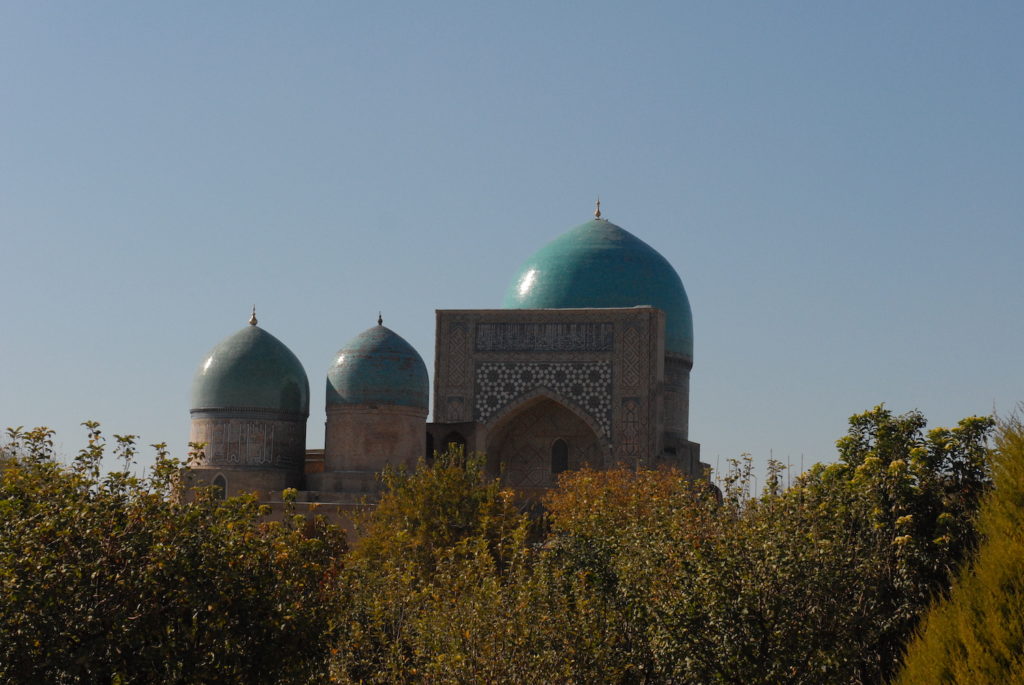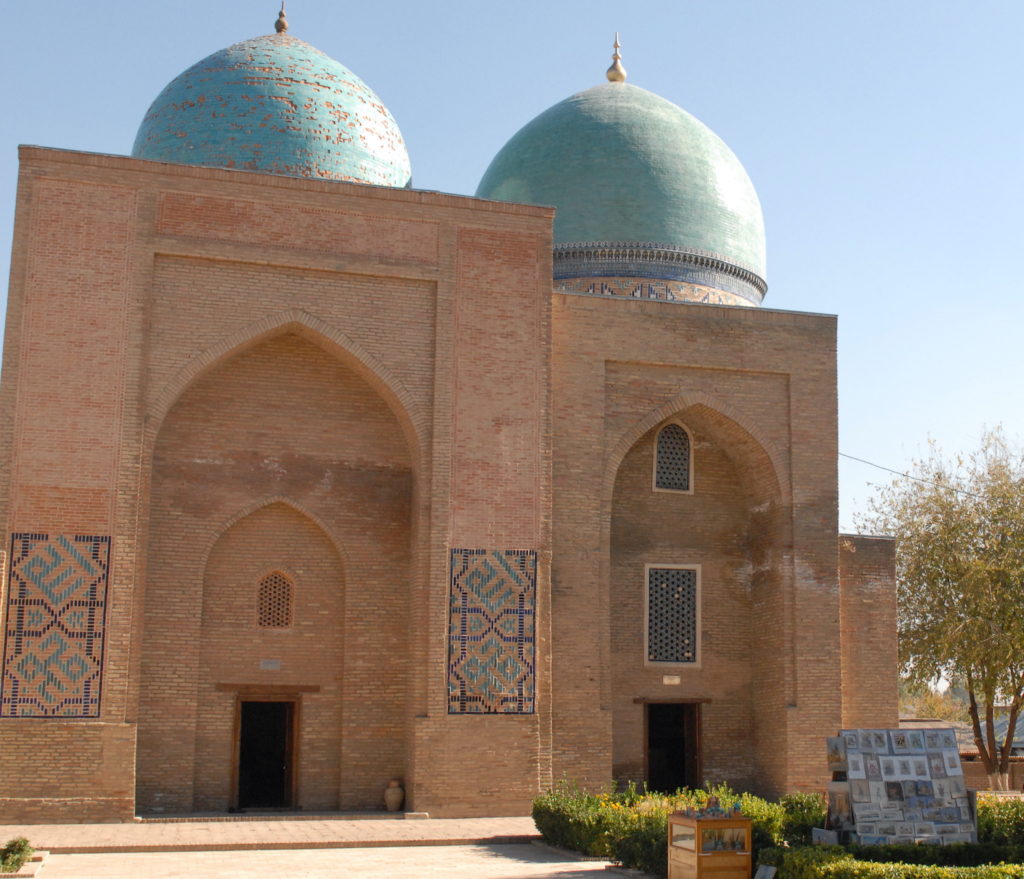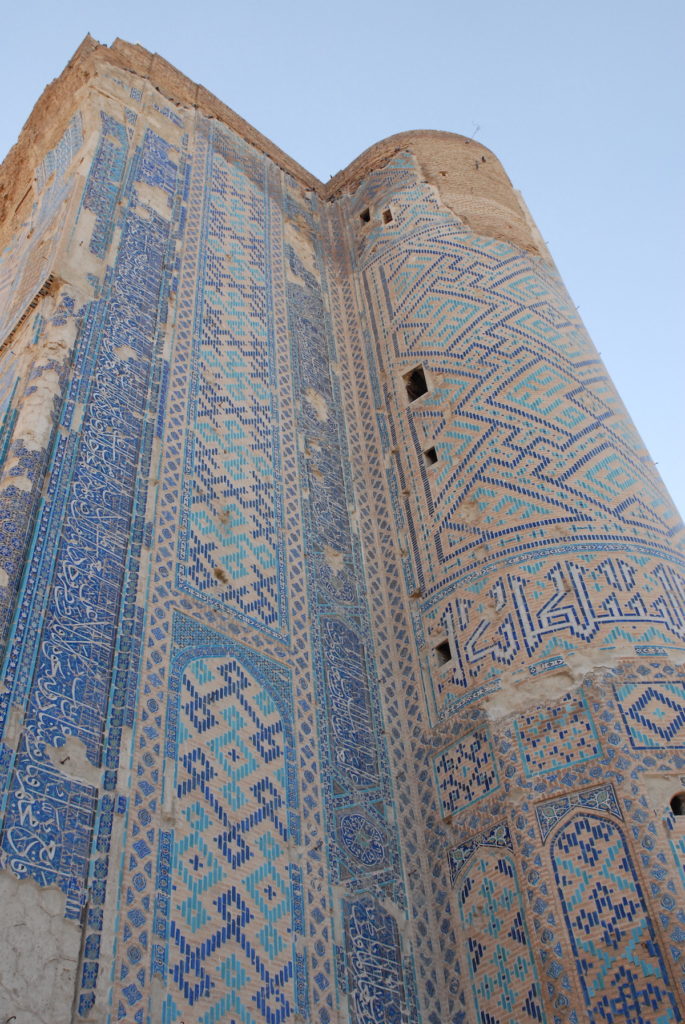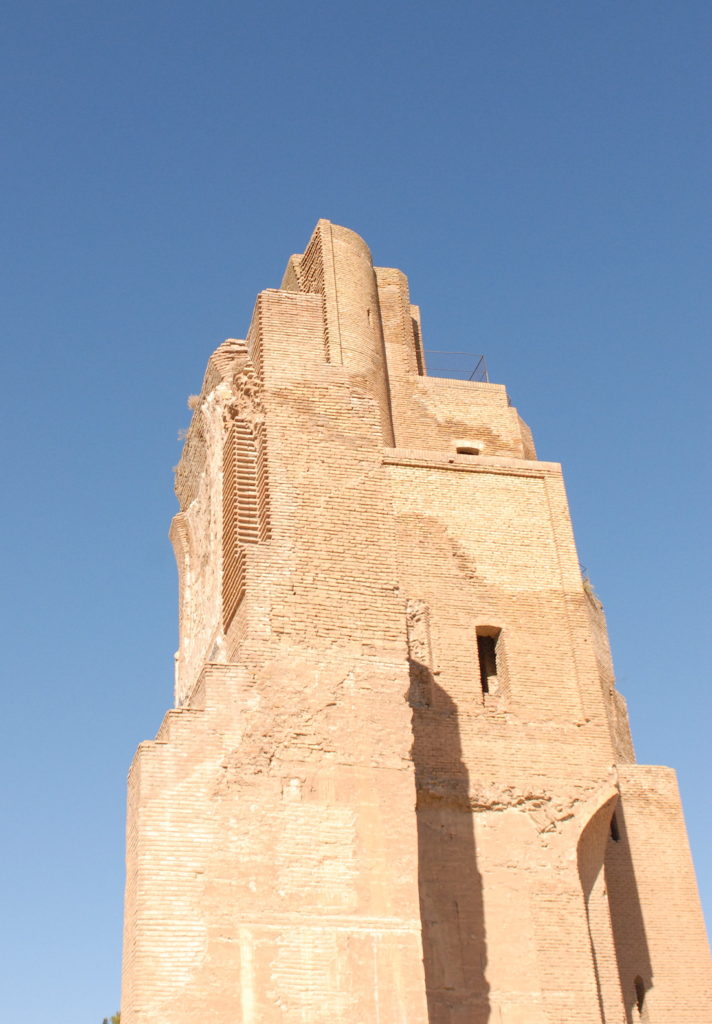Get better acquaintainted with national hero Amir Timur in his hometown of Shakhrisabz.
There has been a settlement here, in the upper reaches of the Qashqa Darya River, for at least 2,700 years. The modern highway from Samarkand overlies a much older route across the mountains, but though it was a well-situated trading post, it would never have come to our notice if it were not for the city’s most famous son: the 14th-century emperor, Amir Timur.
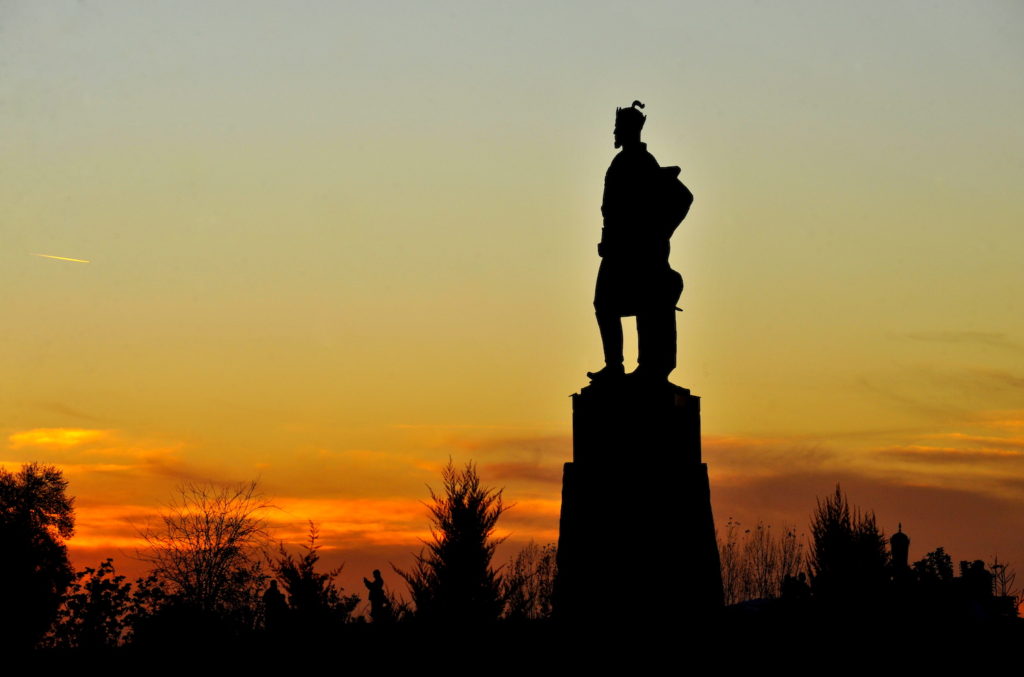
Amir Timur dominates Shakhrisabz, and quite rightly so. Join the throngs of wedding goers in Amir Timur Park to have your photo taken with the modern bronze statue of the great man himself and, more importantly, to see what’s left of the Ak Serai, his once-mighty palace with its unrestored medieval tilework. Then head through the park to the Dor at-Tilyavat and Dor as-Siadat for the Timurid mosque and family necropolis.
There is very little in the way of practicalities here (including no ATMs). Everything is in limbo until the town recovers from the clearing of the Old Town and redevelopment – until then, bring essentials from Samarkand.
Best things to see in Shakhrisabz
Dor at-Tilyavat Complex
This holy site (its name means Abode of Reverence) dates from the 1374 construction of the tomb of Sheikh Shamsiddin Kulyol, a revered Sufi teacher who is credited with converting the Chagtai tribes to Islam; he was joined by various other holy men, and this became an important destination for pilgrimages.
© Sophie Ibbotson and Max Lovell-Hoare © Sophie Ibbotson and Max Lovell-Hoare
On the left/east side of the courtyard (lined with craft stalls) are two heavily restored blue-domed mausoleums (known as the Kosh- Gumbaz or Double Dome): the Mausoleum of Shamsiddin Kulyol to the left, and the Gumbazi Seidon (dome of the Sayyids) to the right, marking the graves of various Timurid-era reverends.
The aptly-named Kok-Gumbaz (Blue Dome), on the right side of the courtyard, was built by Timur’s grandson Ulug Beg in 1434–35, not long after his father had moved the centre of Timurid power from Samarkand to Herat, and is the town’s main mosque. On the site of an older, Karakhanid-era mosque, it once had a dome larger than that of the Bibi Khanym Mosque in Samarkand, as well as 40 domed galleries to house additional worshippers. The original dome collapsed in the late 18th century, but was rebuilt 200 years later.
Ak Serai Complex
At the northern end of Ipak Yuli is Timur’s Ak Serai (or Ok Saroy; White Palace), quite possibly the largest and most impressive building he commissioned. The portal alone would have reached 50m in height and been flanked by a pair of tapered minarets, each 65m tall.
Construction of the palace began in 1380 and it took the labourers and artisans, drawn from across the Timurid Empire, 24 years to complete. According to the Castillian ambassador Clavijo, the rear courtyard was 300 paces wide (in all an estimated 1.6ha) and the reception halls were painted azure blue and richly gilded. It must have been quite a sight.
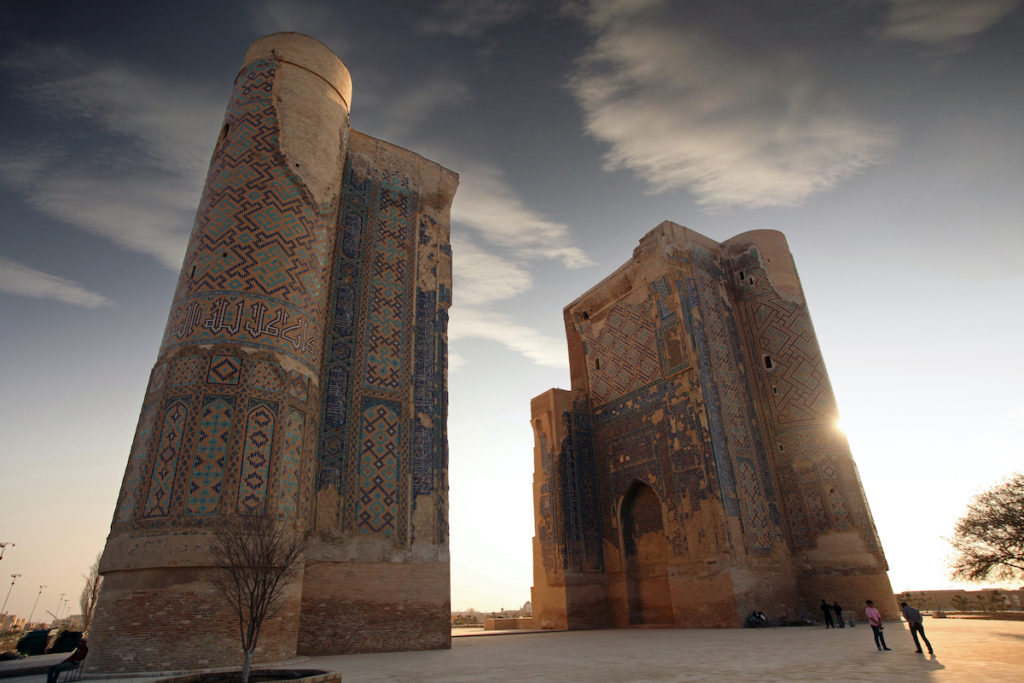
Envisaging the scale and might of this structure today requires a little imagination. In their attempt to wipe out memory of the Timurids, the Shaybanids destroyed many of the original structures, leaving just 38m of the central gateway intact. This may not sound a great deal, but it still rises dramatically above the surrounding parkland and is visible from quite a distance.
Unlike many of Uzbekistan’s other historic sites, very little restoration work has been done here, and UNESCO’s emphasis seems, quite rightly, to be more on shoring up the building than touching up its magnificent (albeit time-ravaged) tile work. This approach enables you to appreciate what is original and what is a modern interpretation of the site, far more so than is possible in Samarkand.
© Sophie Ibbotson and Max Lovell-Hoare © Sophie Ibbotson and Max Lovell-Hoare
Immediately in front of the gates is Shakhrisabz’s modern statue of Amir Timur. It’s big, it’s brash and it probably looks nothing like the man himself, but every bride and groom in the vicinity, plus their inebriated entourages, are clamouring to have their photos taken alongside. If you stray too close, expect to be enveloped into the fold and to have a glass thrust into your hand: foreigners are popular additions to wedding photographs, it seems, even if you’ve previously never met.
